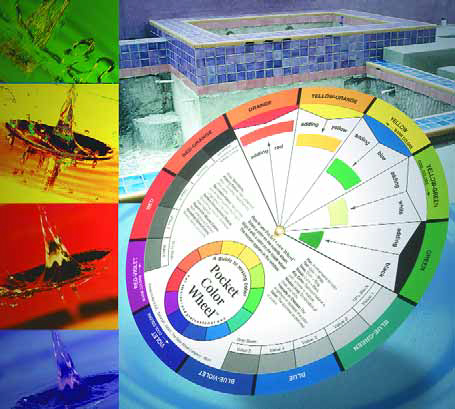Pools & Spas
As you spend your days creating structures that contain and control water, it's easy to lose sight of the water itself. Yes, we're conscious of the fact that we have to filter, treat and sometimes heat it, but in its role as the defining feature in our products, water is so familiar a participant that in some ways it almost becomes invisible. This time around, I want us all to step back from the intricacies of the design, engineering and construction tasks we all perform to consider the water itself. As we do, you'll find yourself thinking (as I often do) that we're in a special, healing trade that
Vanishing-edge pools are all about changing the relationship of the water to its surroundings. They enable the water to reflect views and create visual links to the surrounding scenery in dramatic and surprising ways that simply can't be achieved with conventional designs. The same distinction is true of perimeter-overflow systems and pools with deck-level (or slot-overflow) designs, which is why I classify all three together as "water-in-transit" systems. There's a lot of diversity under that big conceptual umbrella, but these pools share
If you can't see potential in every backyard you walk into, then you're in the wrong business. Yes, some projects are more inspiring than others, and some spaces seem to offer you more to work with than others. Without exception, however, our clients' yards present us with opportunities to develop programs that take advantage of what's there in ways that bring balance and harmony and interest to any setting. Speaking for myself, I'm no more energized in a project than when I get the opportunity to right a wrong and replace a past mistake with a fresh, interesting design - and that was certainly the case in the project discussed in this article and in my past several "Details" columns in this magazine. The setting was special, the clients were great and I was given free rein to work with color, shape and line in vivid, interesting and even startling ways - all in keeping with their wants and desires. SETTING THE SCENE To recap information from recent "Details," this pool/spa combination with its associated decking, walls, planters, outdoor cooking facilities and private garden area are located in a narrow yard at the base of a slope in Pacific Palisades, Calif. It's a spectacular
Water can be a central feature of any design, but in many cases it is just one element among many of equal (if not greater) importance. In the case of the project pictured here, the owners, a gentle and loving family, established and have maintained a vision of just the sort of warm and nurturing home and landscape they wanted, one in which the lives of family members and friends would be sustained, enriched and enlivened. Their vision (and their involvement with us) might have begun with the water, but it has since expanded to include
In conceptual terms, watershape filtration is about as simple as it gets: Water that picks up insoluble organic materials in the form of dirt, debris, dust and algae is drawn by the pump to pass through a filter medium of one type or another. The medium - whether sand, a cartridge or diatomaceous earth - traps these materials and lets only clear, clean water back into the vessel. When the pump sends the cleaned water out of the filter, that water returns to the pool to dilute the dirty water in a continuous cycle of cleansing and dilution that ultimately results - when the system is set up the right way - in clear, clean water that's both aesthetically pleasing and safe. Sand, cartridge and diatomaceous earth filters have long dominated the market, and each requires a filter tank with internal components specific to the filter medium it uses. There are common components (as discussed at the end of this article), but it's important for the watershaper to
Color is amazing. It provides us with some of greatest opportunities we ever have to create spaces that are emotionally evocative and visually compelling - yet it is also one of the most difficult design details to understand and put to good and effective use. Trouble is, there's no easy way to simplify the challenge: Color is indeed a tough nut to crack, and that's as true for architects, artists, fashion designers and the people who choose colors for new
'Project of a lifetime" may not be enough to describe our work at Cima del Mundo. If you'll recall, the hilltop home had experienced many changes since its original construction in 1925, including service as a makeshift monastery as well as a stretch of years in which the property was abandoned and
The way we see it, the most successful watershapes take two participants: a visionary designer who can express the clients' desires, and an accomplished builder who can turn that creative vision into reality. Sometimes, the designer and builder are one and the same person or organization. In many other instances, however, it is the collaboration of two professionals from opposite ends of a project that makes the difference between a watershape that is simply a watershape - and a watershape that is truly a
Skimmers are found in just about every type of watershape imaginable, including gunite, vinyl-lined, fiberglass and aboveground pools as well as in-ground and portable spas - not to mention ponds, stream and fountains. In each case, specific skimmers have been designed to serve the individual applications. For purposes of this discussion, let's keep things simple by sticking to skimmers' most familiar application - in gunite swimming pools. A KEY ROLE The main function of a pool's skimmer is removal of debris from the surface of the water. To do so, the skimmer is connected to the suction-side plumbing of the pool's pump and draws water across a weir (or a float) as a result of the vacuum created by the pump. The weir (or float) is buoyant by nature and allows only a





















